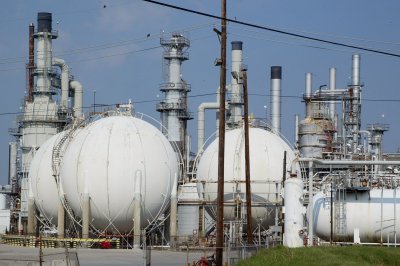Interior Department changes regulations to allow oil, gas leases to ‘comingle’ output

July 8 (UPI) — The U.S. Department of the Interior on Tuesday took steps to make it easier for oil and gas companies to “commingle” multiple U.S. onshore drilling lease applications.
The proposed updates to oil and gas regulations in DOI’s Bureau of Land Management would allow gas and oil company operators to combine, or commingle, multiple federal leases as a means to boost productivity and, the department added, to “better reflect modern industry practices.”
“This is about common sense and catching up with today’s technology,” said Interior Secretary Doug Burgum.
The move is a facet to U.S. President Donald Trump‘s recently passed tax and spending law to permit production via different leases, often under different ownership, and using the same well pad, which is the the cleared site where production facilities operate.
“Commingling” is an industry term to define the intentional or unintentional blending of fuels either to mix similar products together for transport and storage, or to create a newer product with specific characteristics.
Currently, the bureau restricts commingling to leases only with identical mineral ownership, royalty rates and revenue distribution.
The proposed policy switch has a July 15 effective date, barring no unforeseen issues, and overwhelmingly favors corporate interests.
Burgum says the current rules were written “for a different era.”
The administration said the proposed commingling of applications would reduce environmental effects, lower operating costs and increase corporate efficiency.
“These updates will help us manage public resources more efficiently, support responsible energy production, and make sure taxpayers and tribes get every dollar they’re owed,” Burgum continued in a statement.
The department argues it will unlock “energy potential that is currently tied up in regulatory red tape,” and further claimed it could result in nearly $2 billion in annual savings for the oil and gad industry.
Federal regulators for decades treated separate reservoirs with slightly drilling pressures as different reservoirs. The redundancy cost companies about $1.8 billion in avoidable annual costs, which was the same figure cited by DOI as corporate savings.
DOI officials went on to state how those savings could give corporate entities the ability to reinvest in new energy production which, officials added, would help “drive domestic energy development while reducing the need” for a company to invest in extra equipment.
The changes in federal rules could result in a 10% spike in production and over 100,000 extra barrels per day added to American output, Energy Department officials said.
On Tuesday, the administration said the Bureau of Land Management plans to “move quickly” to update the proposed federal regulations after a period of public comment and before the July 15 start date of the new policy.

